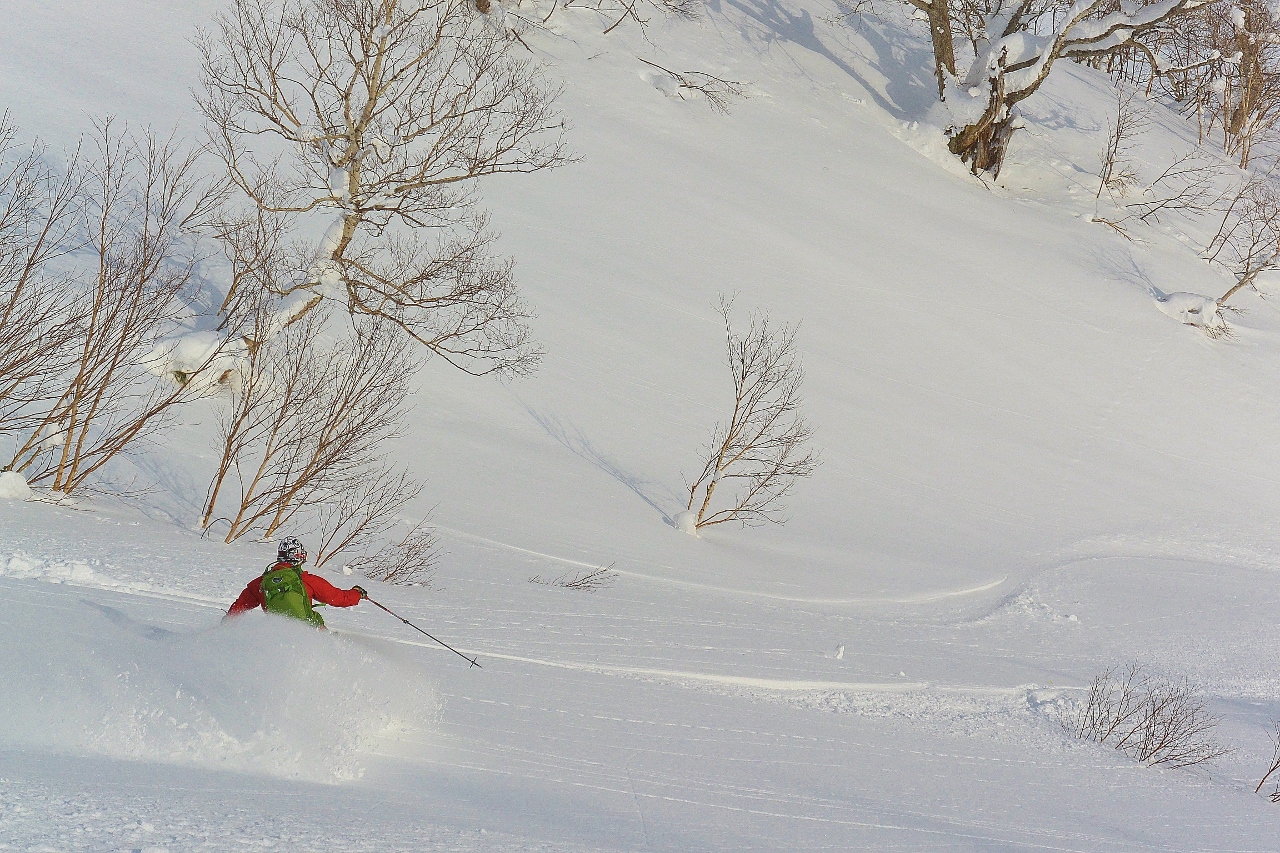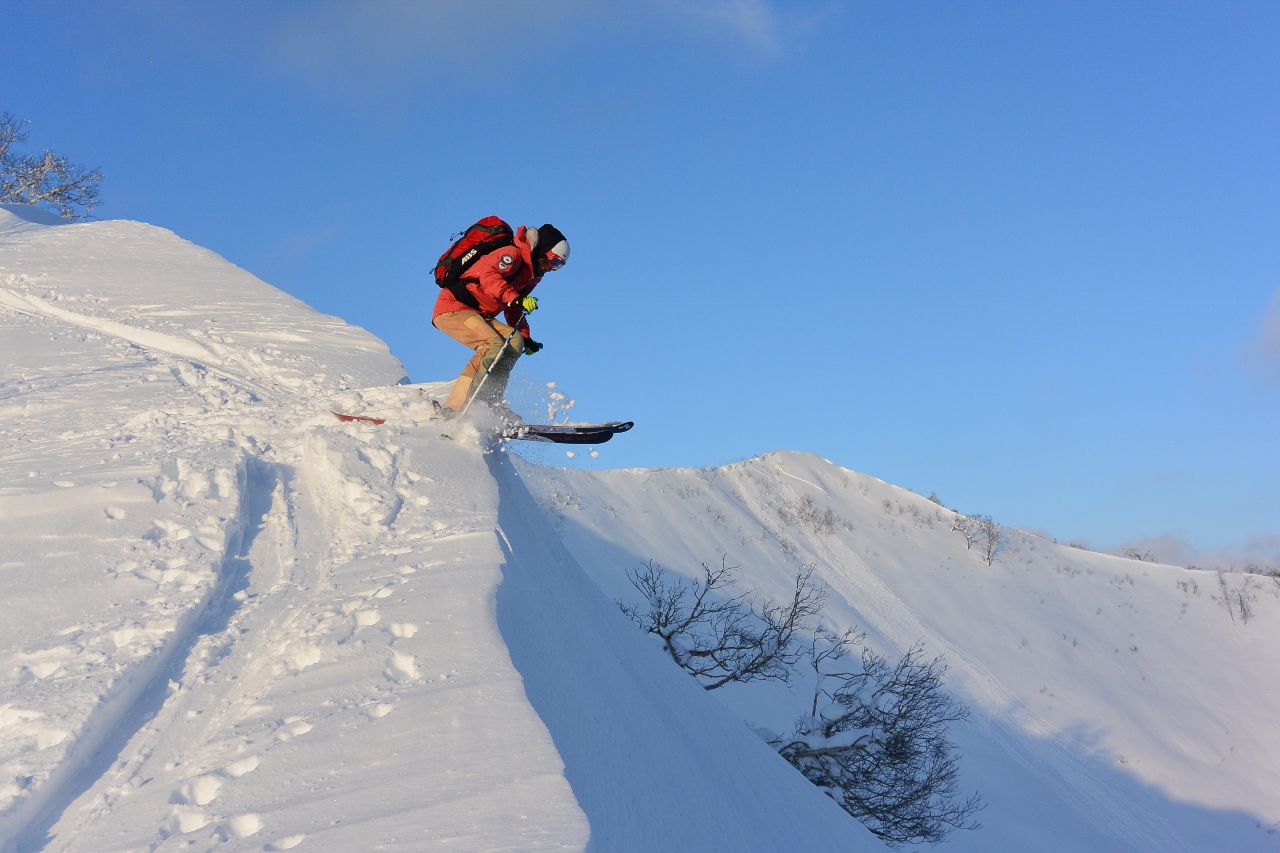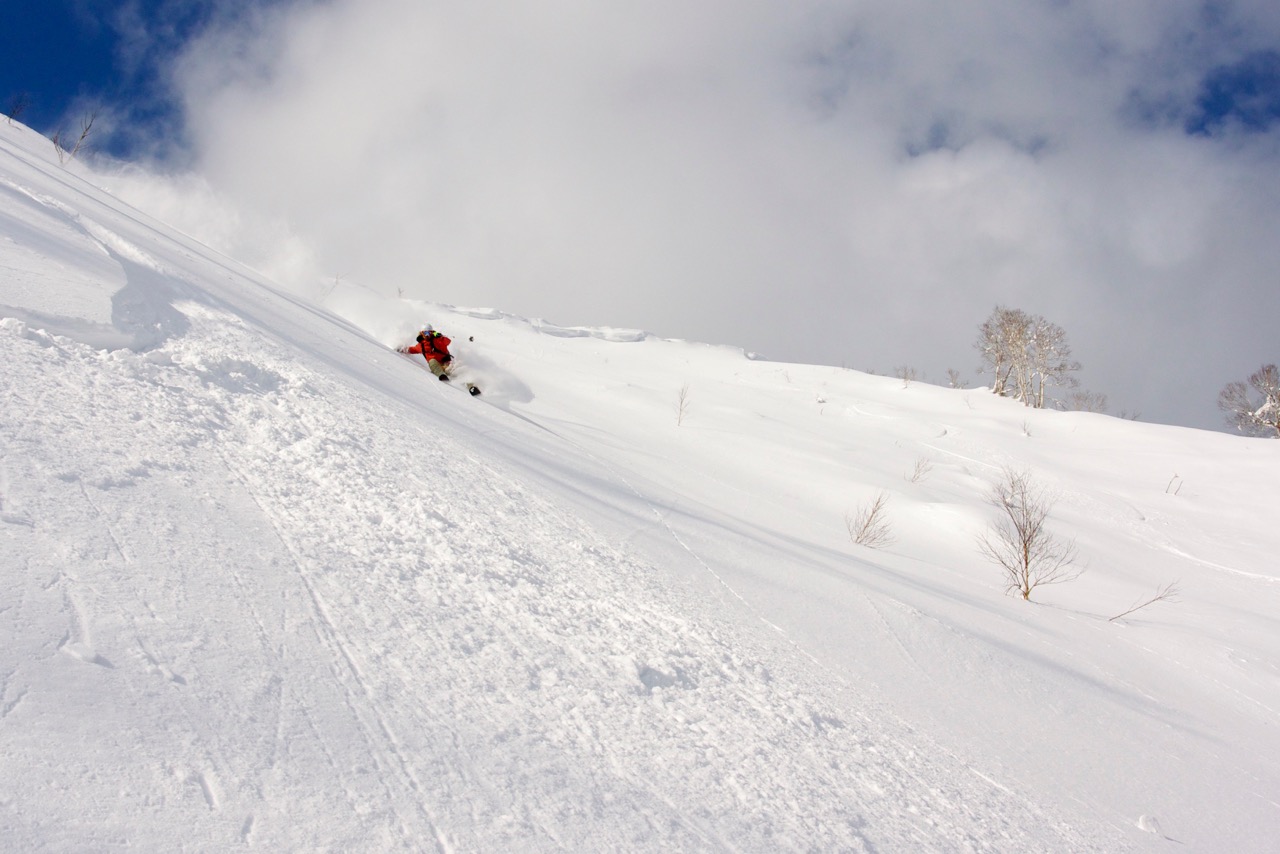One year ago, when the Powder Project was just a few scribbles on Pete's whiteboard, I came to Hokkaido to start figuring out where, when and how we'd take people around this incredible island. The "recon trip" was a troubled idea from the outset: I had no money, no contacts, and was recovering from an injury. My kneecap had been smashed into seven pieces during an end-of-season ski mountaineering jaunt in NZ a few months earlier, and it wasn't clear whether I could even ski. But I'd agreed to drive a bunch of friends around as a sort of trial-trip, so I bought some heavy duty kneepads and got on the plane.
Mostly, that trip was cold and painful. It turned out I couldn't ski - I rode a few groomers here and there, but it wasn't pretty (a CT scan shortly after I got home showed my kneecap had a hole in it). I was sleeping in the back of a Subaru Imprezza, which was just long enough to stretch out in and just cold enough to be unrelentingly miserable, and I spent my days driving around, checking out ski areas and towns, meeting people and practising my Japanese. After a week or so, Pete and the rest of the group turned up for 10 days of skiing, so I moved out of the car and into hotel rooms as I sorted out the logistics for the trip, helped them find ski gear, and cut seemingly endless sets of skins. I ski because it's fun, but also because it's a way to be in and move through the mountains. I might have been hanging around mountains that trip, but everything felt a very long way away.
Then we got to Kurodake. We turned up at the ropeway on a perfectly clear day and once the group had headed off with their guide I caught the cable-car up to the top station to have a look around.
You can read the details in our Resort Write-Up which I'll post later this month, but in a nutshell, Kurodake is a mountain in the Daisetsuzan National Park in the middle of Hokkaido. It's next to a town called Sounkyo, and it's a beast. One side of the mountain is a system of jagged black bluffs that drop hundreds of metres from the craggy summit to a tight and twisting drainage below. It's not really a ski field. There's a ropeway running up a ridge, with a short chairlift and a few flat groomers at the top. You can ski back down the ropeway, through a series of steep gullies and tree-covered faces that work their way through the bluffs. People also hike up from the chairlift to ski a long, open pitch below the summit.
But from the observation platform on the top-station of the ropeway, you can see past the peak and into the head of the drainage northwest of the mountain. Steep chutes drop from the ridgeline into the drainage below, sheltered from the prevailing winds and sun. Here were beautiful, sustained, aesthetic lines more at home in New Zealand or the Alps than the rounded, forested slopes most people associate with Hokkaido.














